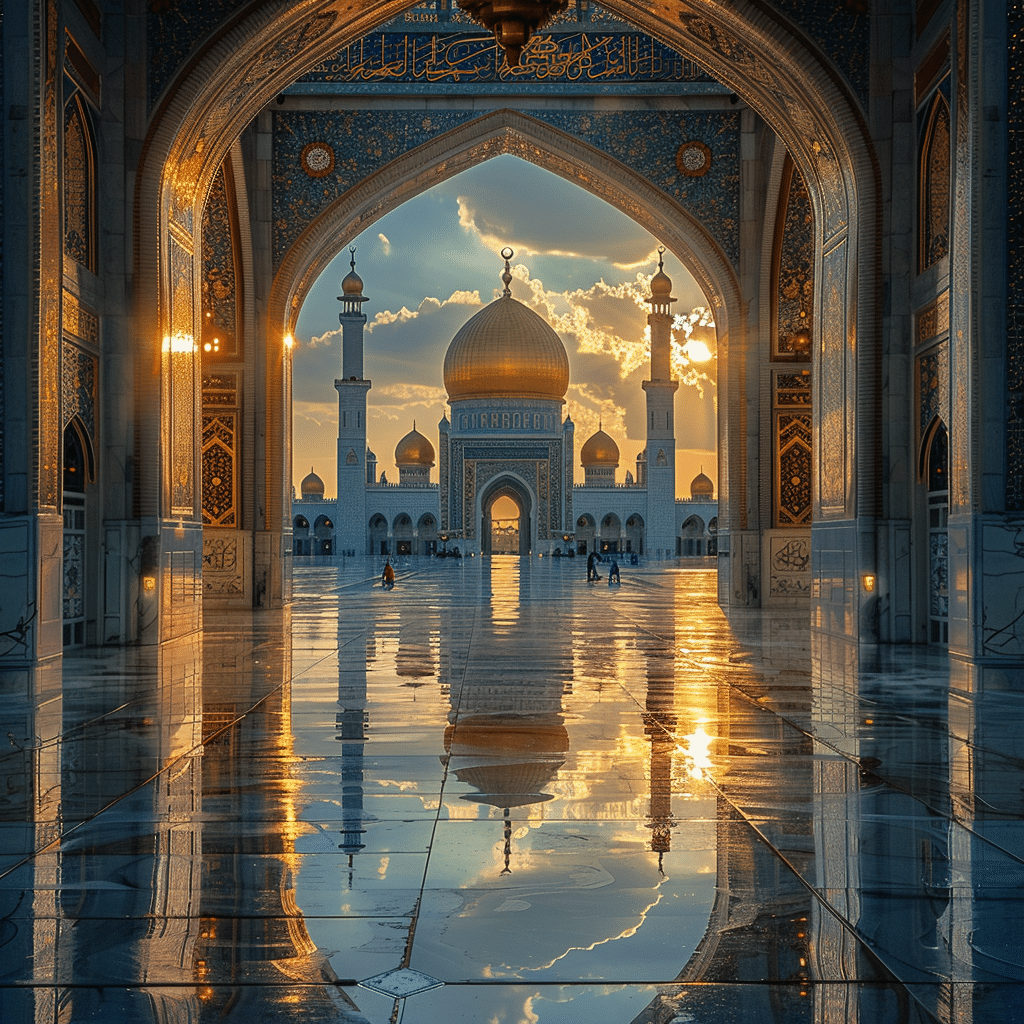The Origins and Rise of Ansar Allah
The roots of Ansar Allah, commonly recognized as the Houthi movement, are deeply entrenched in Yemen’s northern Saada province, dating back to the early 1990s. Originally initiated as a religious movement by Hussein Badreddin al-Houthi, Ansar Allah later transformed into a formidable political and military force. Al-Houthi, a charismatic Zaydi Shia cleric, sought to elevate Zaidism and counter the rising Salafi influences in the region. This revivalist vision exacerbated tensions with the central government, compounded by the longstanding socio-economic neglect of Zaydi-majority areas.
Hussein al-Houthi’s influential persona and the group’s early stance against issues like government corruption and the U.S. involvement in Middle Eastern politics garnered substantial local support. However, his death in 2004, during skirmishes with Yemeni government forces, marked a critical shift towards militancy for Ansar Allah.
Ansar Allah’s Ideological Foundations
Ansar Allah’s ideology is a blend of Zaydi Shia traditions and contemporary socio-political grievances. Unlike Twelver Shia Islam dominant in Iran, Zaidism possesses unique theological principles. Nonetheless, Ansar Allah’s frequent alignment with Iran has led to accusations of them being an Iranian proxy, allegations both parties have occasionally denied.
Their rhetoric is profoundly anti-foreign intervention, especially against the United States and Israel, accused of causing regional instability. The movement’s notorious chant, “God is great, death to America, death to Israel, curse on the Jews, victory to Islam,” echoes this sentiment.

| Aspect | Details |
|---|---|
| Name | Ansar Allah (أنصار الله ʾAnṣār Allāh, lit. ‘Supporters of God’) |
| Common Name | Houthi Movement |
| Origin | Northwestern Saada province, Yemen |
| Emerged | 1990s |
| Ideology | Shia Islamism |
| Key Leaders | Abdul-Malik al-Houthi, Hussein Badreddin al-Houthi (founder, deceased) |
| Primary Region of Control | Sanaa (Yemeni capital) and all of former North Yemen except for eastern Marib Governorate |
| Initial Cause | Opposition to government policies and foreign influence in Yemen |
| Current Standing | Active political and military movement |
| Allies | Iran |
| Adversaries | Yemeni government, Saudi-led coalition, AQAP (Al-Qaeda in the Arabian Peninsula), ISIS |
| International Recognition | Generally not recognized as legitimate ruling authority |
| Notable Events | Capture of Sanaa (2014), Saudi-led intervention in Yemen (2015) |
| Humanitarian Impact | Significant humanitarian crises, including famine, displacement, and widespread casualties |
| International Perspective | Viewed variably as a terrorist group, insurrectionist movement, or legitimate resistance |
Military Might: From Guerrilla Warfare to Ballistic Missiles
Ansar Allah’s evolution into a significant military entity began during the Saada Wars (2004-2010), where they refined their guerrilla warfare against Yemeni government forces. The 2011 Arab Spring further facilitated their rise, as the ensuing political chaos weakened the central authority. By 2014, Ansar Allah had captured Yemen’s capital, Sanaa, significantly escalating the national conflict.
The movement’s arsenal is now highly advanced, featuring ballistic missiles, drones, and anti-ship missiles. They have carried out numerous missile strikes on Saudi Arabia, demonstrating their enhanced capabilities. The debated origin of these advanced weapons has been a point of contention. Saudi Arabia and its allies accuse Iran of providing support, while Ansar Allah claims their armaments are either domestically produced or captured from adversaries.
Political Strategy and Governance
Governance under Ansar Allah in northern Yemen is a mixed bag. They have set up administrative structures, levied taxes, and provided public services despite the war. However, their governance is marred by allegations of human rights abuses, including arbitrary detentions, forced disappearances, and curbs on freedom of speech.
Politically, Ansar Allah has participated in multiple negotiations. The 2022 Riyadh Agreement and the extended ceasefire in 2023 marked rare de-escalation moments, though sustained peace remains elusive. Their demands, such as recognition as a legitimate political entity and lifting the Saudi-led blockade, underscore their aspirations for greater autonomy and influence.

The Impact of the Humanitarian Crisis
The ongoing war in Yemen has triggered one of the world’s most severe humanitarian crises, with millions displaced and widespread famine. Ansar Allah’s role in this catastrophe is highly contentious. While they profess efforts to mitigate civilian suffering, airstrikes by the Saudi-led coalition and blockades have complicated relief measures.
International bodies like the United Nations have consistently called for unrestricted humanitarian access, highlighting the opaque nature of aid distribution in Houthi-controlled areas. A 2023 UNICEF report emphasized that only a fraction of aid reaches those most in need, citing bureaucratic hurdles and alleged diversions.
International Reactions and Geopolitical Implications
Global reactions to Ansar Allah are polarized. The U.S., U.K., and Gulf Cooperation Council (GCC) predominantly view them as destabilizing Iranian proxies. Conversely, Russia and China have shown a readiness to engage diplomatically, pushing for comprehensive peace talks.
The movement’s ties with Hezbollah add another layer of complexity. Shared propaganda techniques and military training hint at a broader network of non-state actors aligned against common enemies. This dynamic exacerbates regional tensions and pulls Yemen deeper into the proxy battles characteristic of Middle Eastern geopolitics.
Ansar Allah in 2024: The Future Trajectory
As of 2024, Ansar Allah remains a dominant force in Yemen’s political scene. Their tactical and political adaptability signifies they are anything but fleeting. However, the pathway to peace is strewn with obstacles. Will further negotiations succeed, or will the stalemate continue?
Yemen’s long-term stability hinges on an inclusive political process that acknowledges Ansar Allah’s role while tackling wider socio-economic issues. How the international community engages, balancing pressure with incentives, will likely influence the outcome.
Charting the Course Forward
The story of Ansar Allah is one of resilience in adversity, driven by a strong ideological vision. Understanding their journey is crucial for grasping Yemen’s turmoil and the broader Middle Eastern geopolitics. The interplay of local grievances, regional ambitions, and global interests shapes this powerful movement, whose impact extends beyond Yemen’s borders.
Addressing the conflict’s roots, fostering genuine dialogue, and ensuring humanitarian aid are crucial steps for a more stable, prosperous Yemen. As the world watches, the perseverance of Yemen’s people and international actions will decisively shape the next chapter in the country’s tumultuous history.
Thanks for reading this detailed analysis on Ansar Allah, Yemen’s powerful Houthi movement. For those grappling with ideas on how to finance their endeavors, consider exploring Loans To consolidate Debts. If you’re wondering about legal safeguards in personal matters, it’s worth understanding What Is a Pre-nup. And if you need a lighter read after diving into heavy topics, check out these Jokes For Kids. For more on global events, visit CWM News for coverage on topics like the airplane crash in Florida or the resurgence of hope in aviation history, as when Amelia Earhart Was found. Stay informed and engaged with the world around you.
Ansar Allah: Yemen’s Powerful Houthi Movement
Origins and Influence
Did you know that the Houthis, officially known as Ansar Allah, have roots tracing back to the early 1990s? Born in Yemen’s northern Saada province, the movement began as a response to political and socioeconomic issues. Originally, the Houthis sought to empower the Zaidi Shia community. Despite facing initial resistance, they grew stronger, gaining significant influence over time.
Tax Exemptions and Societal Impact
Interestingly, one of the critical steps in consolidating their power was offering local communities perks like being Exempted From taxation. This move helped win over hearts and minds, making Ansar Allah seem like a champion of the people. By reducing financial burdens, they not only garnered support but also destabilized government fiscal policies.
Leadership and Shifts
Under the leadership of Abdul-Malik al-Houthi, Ansar Allah shifted gears from mere local grievances to broader national ambitions. However, this transformation didn’t come without its pitfalls. Critics argue that the movement, over time, has fallen into a state of complacency in terms of achieving its original goals. There’s a broader debate on whether their increasing political power has led to more harm than good.
Modern Relevance and Challenges
In recent years, Ansar Allah has faced numerous challenges, from internal dissent to external military pressures. Despite all this, they remain a formidable force in Yemen’s complex political landscape. Their supporters see them as defenders, while critics often draw parallels between them and other contemporaneous conflicts, like the aftermath of the Baltimore shooting in terms of public turmoil and instability. This ongoing dichotomy keeps them at the center of Yemen’s future, for better or worse.

What is the meaning of Ansar Allah?
Ansar Allah translates to “Supporters of God” in Arabic. It’s the official name of the Houthi movement, a Shia Islamist group from Yemen.
Who are the leaders of Ansar Allah?
The leaders of Ansar Allah include Abdul-Malik al-Houthi, who has been the prominent figure leading the organization.
Who controls Yemen now?
The Houthis currently control the capital, Sanaa, and most of the former North Yemen, except for part of the Marib Governorate.
Who are the hoodies in the Middle East?
There seems to be a mix-up here; there’s no significant reference to “hoodies” in the Middle East. You might be thinking of the Houthi movement in Yemen.
What is the politics of Yemen?
Yemen’s politics have been turbulent with a civil war ongoing between the internationally recognized government and the Houthi insurgents. It’s a complex mix of tribal, regional, and international influences.
Is Allah pleased with the Ansar?
This is a theological question, but in general, religious opinions about whether Allah is pleased with any group can vary widely among Muslims.
Who are called Ansar in Islam?
In Islamic history, the Ansar were the citizens of Medina who helped the Prophet Muhammad and the early Muslims when they migrated from Mecca.
What did the Prophet say about the Ansar?
The Prophet Muhammad praised the Ansar, saying their support and hospitality were highly valued, cementing their revered status in Islamic history.
Are Ansari Muslims?
Yes, Ansari is a title used by some Muslims, especially in South Asia, to denote their descent from the Ansar of Medina who helped the Prophet Muhammad.
What did Ansar Al Islam do?
Ansar Al-Islam is a militant Islamist group that has been active in Iraq and some parts of Syria, involved in insurgent activities against local governments and international forces.
Why is Yemen so poor?
Yemen finds itself in poverty due to prolonged conflict, political instability, and lack of access to many basic services and resources.
Is Yemen Sunni or Shia?
Yemen has a mix of Sunni and Shia Muslims, but the majority are Sunni.
Who started Yemen crisis?
The Yemen crisis started due to the 2011 uprising during the Arab Spring, which eventually escalated into a full-scale civil war involving various factions and foreign interventions.
Why do Middle Eastern men wear scarves?
Middle Eastern men wear scarves, like the keffiyeh or ghutra, for cultural, religious, and practical reasons, such as protection from the sun and dust.
Why do men wear long shirts in the Middle East?
Men in the Middle East wear long shirts like the thawb or dishdasha as part of their traditional dress, which is comfortable and suitable for the region’s hot climate.
What is the most fashionable country in the Middle East?
Fashion preferences vary, but countries like Lebanon and the UAE are often considered very fashionable in the Middle East.
What is Yemen famous for?
Yemen is famous for its historical sites, unique architecture, and rich cultural heritage, including the ancient skyscrapers of Shibam and the old city of Sana’a.
What was the old name for Yemen?
The old name for Yemen was “Arabia Felix,” a term used by the Romans meaning “Happy Arabia” due to the region’s prosperity in ancient times.
Are yemenis original Arab?
Yemenis are considered original Arabs, tracing their ancestry back to ancient Semitic tribes.
What is the meaning of Ansar?
Ansar generally means “helpers” or “supporters” in Arabic.
What does Al Ansar mean in Arabic?
Al Ansar in Arabic means “the supporters,” often referring to those who assisted Prophet Muhammad when he migrated to Medina.
What did the Prophet say about the Ansar?
The Prophet Muhammad praised the Ansar for their dedication and support to the early Muslim community, calling them beloved and crucial to Islam’s foundation.
What did Ansar Al-Islam do?
Ansar Al-Islam, a militant group, has engaged in insurgent activities and attacks mainly in Iraq, aiming to establish their interpretation of an Islamic state.



